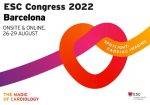Spontaneous coronary artery dissections (SCD) are more frequent in women and account for about 25% of all acute myocardial infarctions (AMI) before the age of 50. While the presence of cardiogenic shock due to AMI is infrequent, its evolution is still somewhat unclear and it has not been fully analyzed. Researchers conducted an analysis in<a href="https://solaci.org/en/2022/11/17/coronary-artery-dissection-and-cardiogenic-shock-how-do-they-evolve/" title="Read more" >...</a>
Do Short- and Long-Term Results of Left Atrium Appendage Closure Differ Between Men and Women?
Left atrium appendage closure (LAAC) is a major strategy to prevent stroke in patients with nonvalvular atrial fibrillation (AF). LAAC registries to date show that women present twice the risk for major events and higher rates of in-hospital complications and hospital re-hospitalization at 30 days when compared with men. However, long-term results according to sex are<a href="https://solaci.org/en/2022/11/14/do-short-and-long-term-results-of-left-atrium-appendage-closure-differ-between-men-and-women/" title="Read more" >...</a>
Post AMI Ventricular Septal Defect: Contemporary Results of Endovascular vs Surgical Repair
In the era of endovascular intervention, with shorter revascularization times, we see lower rates of mechanical complications due to acute myocardial infarction (AMI). Increased rates were recorded during the COVID-19 pandemic, but driven by delays in consultation. Though occasional (with an estimated incidence of 0.2%), post AMI ventricular septal defect (VSD), or interventricular communication, involves<a href="https://solaci.org/en/2022/10/31/post-ami-ventricular-septal-defect-contemporary-results-of-endovascular-vs-surgical-repair/" title="Read more" >...</a>
Spontaneous Coronary Artery Dissection: Are There Differences Between Men and Women?
Spontaneous coronary artery dissection is one of the causes of acute coronary syndrome, with a prevalence between 1 and 4%, that might reach up to 35% in women <50 years old, according to recent studies. As dissections are more frequent in women, research focuses on this population. Small retrospective studies have shown different triggers and predisposing<a href="https://solaci.org/en/2022/10/28/spontaneous-coronary-artery-dissection-are-there-differences-between-men-and-women/" title="Read more" >...</a>
Spontaneous Coronary Artery Dissection: Treatment and Prognosis
Spontaneous coronary artery dissection (SCAD) is a non-traumatic nor iatrogenic event that causes a separation of the coronary artery tissue due to an intimal tear or a mural spontaneous hemorrhage. This event is most frequent in young females and usually causes an acute myocardial infarction that could be major. It accounts for 1% to 4%<a href="https://solaci.org/en/2022/10/21/spontaneous-coronary-artery-dissection-treatment-and-prognosis/" title="Read more" >...</a>
TCT 2022 | Angioplasty vs. Surgery: The BEST Study Long-Term Results
The BEST study was a prospective, randomized study to compare percutaneous coronary intervention (PCI) with everolimus-eluting stents vs. myocardial revascularization surgery (MRS) in patients with multivessel disease. The analysis was interrupted early due to slow patient inclusion. The study included 880 patients, who were randomized 438 to the PCI arm and 442 to the MRS arm.<a href="https://solaci.org/en/2022/09/26/tct-2022-angioplasty-vs-surgery-the-best-study-long-term-results/" title="Read more" >...</a>
TCT 2022 | CLASP II D TRIAL: Transcatheter Edge-to-Edge Repair for Mitral Regurgitation in Patients at Prohibitive Risk
The CLASP IID study was a prospective randomized study to assess the efficacy and effectiveness of the PASCAL transcatheter valve repair system compared with the MitraClip device for patients with degenerative mitral regurgitation (MR) at prohibitive surgical risk. The study included Patients at prohibitive surgical risk, candidates for both devices, with MR 3+ to 4+,<a href="https://solaci.org/en/2022/09/21/tct-2022-clasp-ii-d-trial-transcatheter-edge-to-edge-repair-for-mitral-regurgitation-in-patients-at-prohibitive-risk/" title="Read more" >...</a>
Mortality and Bleeding in Access Site Choice: Systematic Review
In 1992, Kiemeneij performed the first transradial coronary procedure, following Campeau’s description of that access in 1989. It’s been 30 years since that milestone in interventional cardiology. Over time, the number of procedures conducted with this approach has increased exponentially, and it is the main approach in most centers in different clinical scenarios. Historically, the<a href="https://solaci.org/en/2022/09/14/mortality-and-bleeding-in-access-site-choice-systematic-review/" title="Read more" >...</a>
Is TCA Useful for Severe Impairment of Left Ventricular Ejection Fraction?
Heart disease is the most frequent cause of heart failure and, in some observational studies, transluminal coronary angioplasty (TCA) could help improve ventricular function. The only major randomized study to compare myocardial revascularization surgery (MRS) vs. medical treatment in patients with ventricular function impairment was the STICH study, which showed no difference at 5 years,<a href="https://solaci.org/en/2022/09/06/is-tca-useful-for-severe-impairment-of-left-ventricular-ejection-fraction/" title="Read more" >...</a>
ESC 2022 | Should We Follow-Up with Functional Testing in High-Risk Patients after CTA?
While the need for repeat cinecoronary angiography after transluminal coronary angioplasty (TCA) has decreased with the use of drug-eluting stents and improved medical treatment, patients still present ischemic recurrence or cardiovascular events at follow-up. Using a functional test at follow-up after TCA or myocardial revascularization (CMR) is a frequent practice in our context. This is<a href="https://solaci.org/en/2022/09/05/esc-2022-should-we-follow-up-with-functional-testing-in-high-risk-patients-after-cta/" title="Read more" >...</a>







